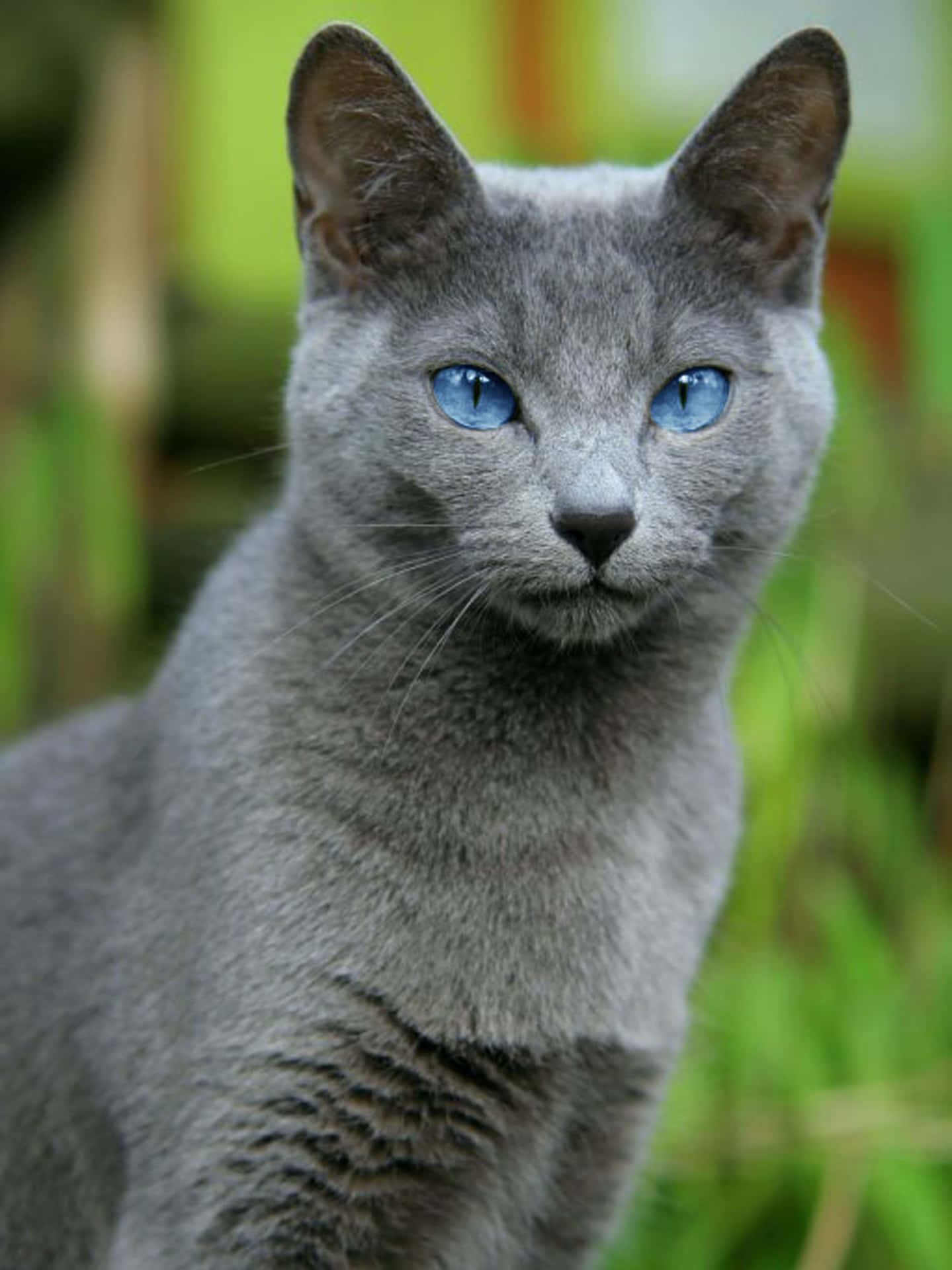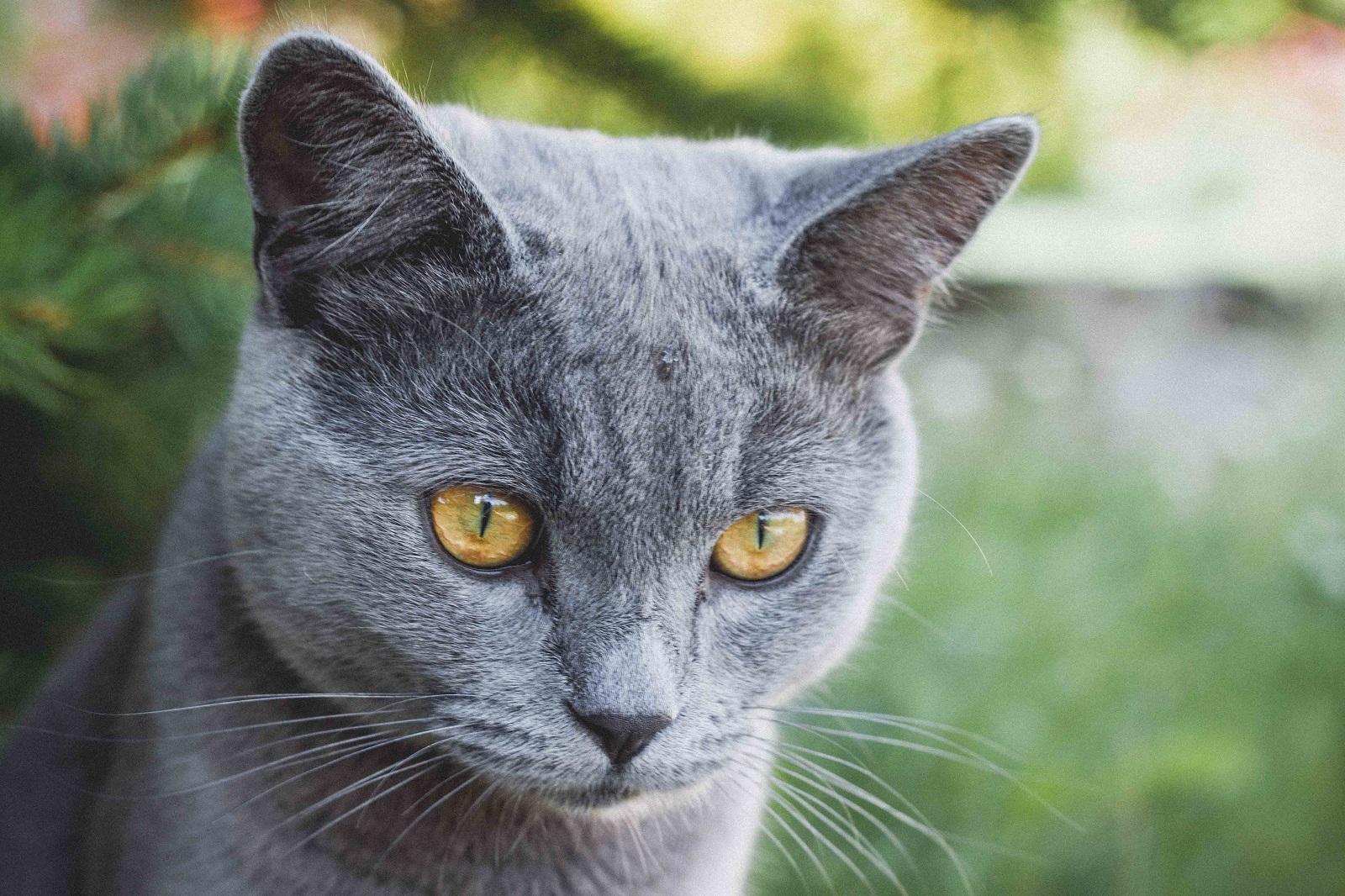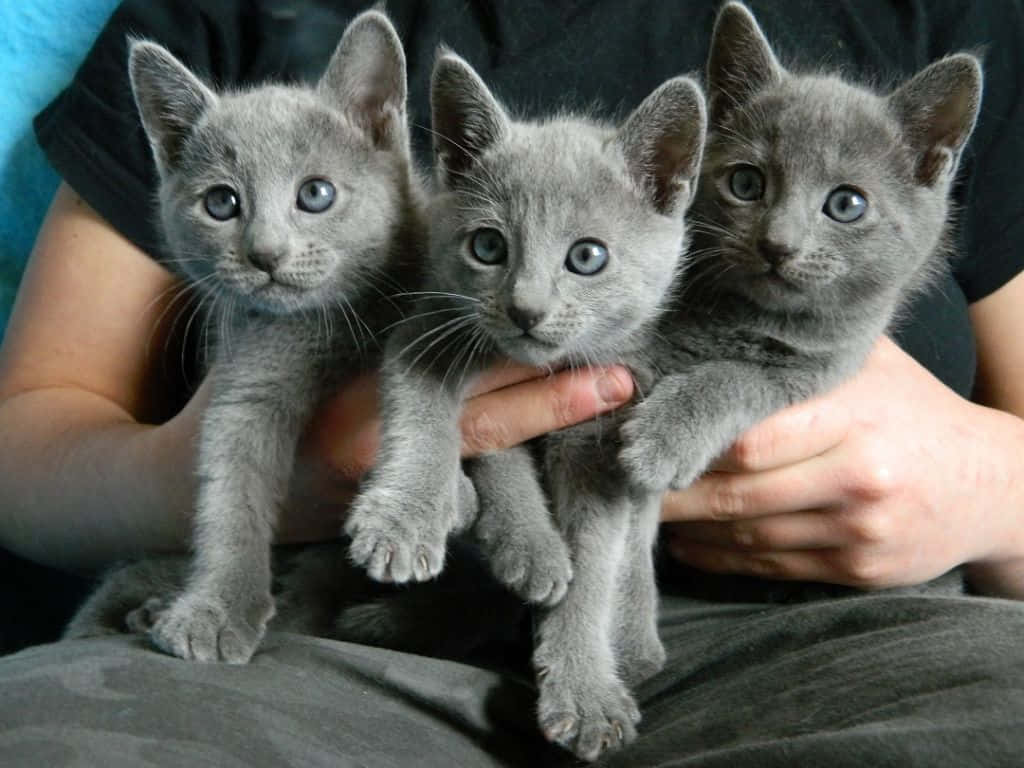The Russian Blue cat, with its striking appearance and gentle demeanor, has captivated cat lovers worldwide for centuries.

This breed’s origins are shrouded in mystery, but it’s believed to have originated in Russia, hence its name, and was first recorded in the 19th century.

One of the most distinctive features of the Russian Blue is its stunning coat, which is short, dense, and plush, with a shimmering silver-blue hue that gives it an ethereal appearance.
Despite their name, Russian Blues are not always blue; they can have varying shades of gray, ranging from a light silver to a deep slate gray, but the ideal color is a uniform, bright blue.

Their coat is also unique in that it has a double layer, providing insulation and protection against the cold Russian winters from which they hail.
Russian Blues are known for their striking green eyes, which are large, almond-shaped, and expressive, adding to their enigmatic allure.

Beyond their physical beauty, Russian Blues are cherished for their calm and gentle nature, making them wonderful companions for families, singles, and seniors alike.
These cats are typically reserved around strangers but form strong bonds with their human family members, often following them around the house and even greeting them at the door.
Russian Blues are known to be highly intelligent and trainable, enjoying interactive play sessions, puzzle toys, and even learning tricks such as fetching.
While they are not overly vocal, Russian Blues are not completely silent either; they may communicate with soft, melodious chirps and trills, especially when seeking attention or expressing contentment.
Despite their independent streak, Russian Blues thrive on companionship and can become lonely if left alone for long periods, so they do best in homes where they receive plenty of love and interaction.

Due to their gentle nature, Russian Blues tend to get along well with children and other pets, although they may prefer the company of fellow felines.
Proper care and grooming are essential for Russian Blues to maintain their luxurious coat and overall health; regular brushing helps reduce shedding and prevents matting.

Russian Blues are generally healthy cats with a lifespan of 10 to 15 years, but like all breeds, they may be prone to certain genetic health issues such as hypertrophic cardiomyopathy.
It’s important to provide Russian Blues with a balanced diet, plenty of exercise, and regular veterinary check-ups to ensure they lead long, happy lives.
Despite their aristocratic appearance, Russian Blues are adaptable and can thrive in various living environments, whether it’s a cozy apartment or a spacious home.

The Russian Blue’s elegant demeanor and regal bearing have inspired artists, writers, and poets throughout history, making them a muse for creativity and admiration.
In popular culture, Russian Blues have been featured in films, television shows, and literature, further solidifying their status as beloved feline companions.
Russian Blues have a storied past, with some legends suggesting they were kept by Russian czars and prized for their beauty and grace.

Although their exact origins may be uncertain, the Russian Blue’s legacy as a cherished companion cat is indisputable, with their gentle nature and captivating presence winning hearts around the world.
Whether lounging gracefully on a sun-drenched windowsill or playfully chasing a feather toy, the Russian Blue embodies elegance, intelligence, and affection, making them a truly special breed of cat.